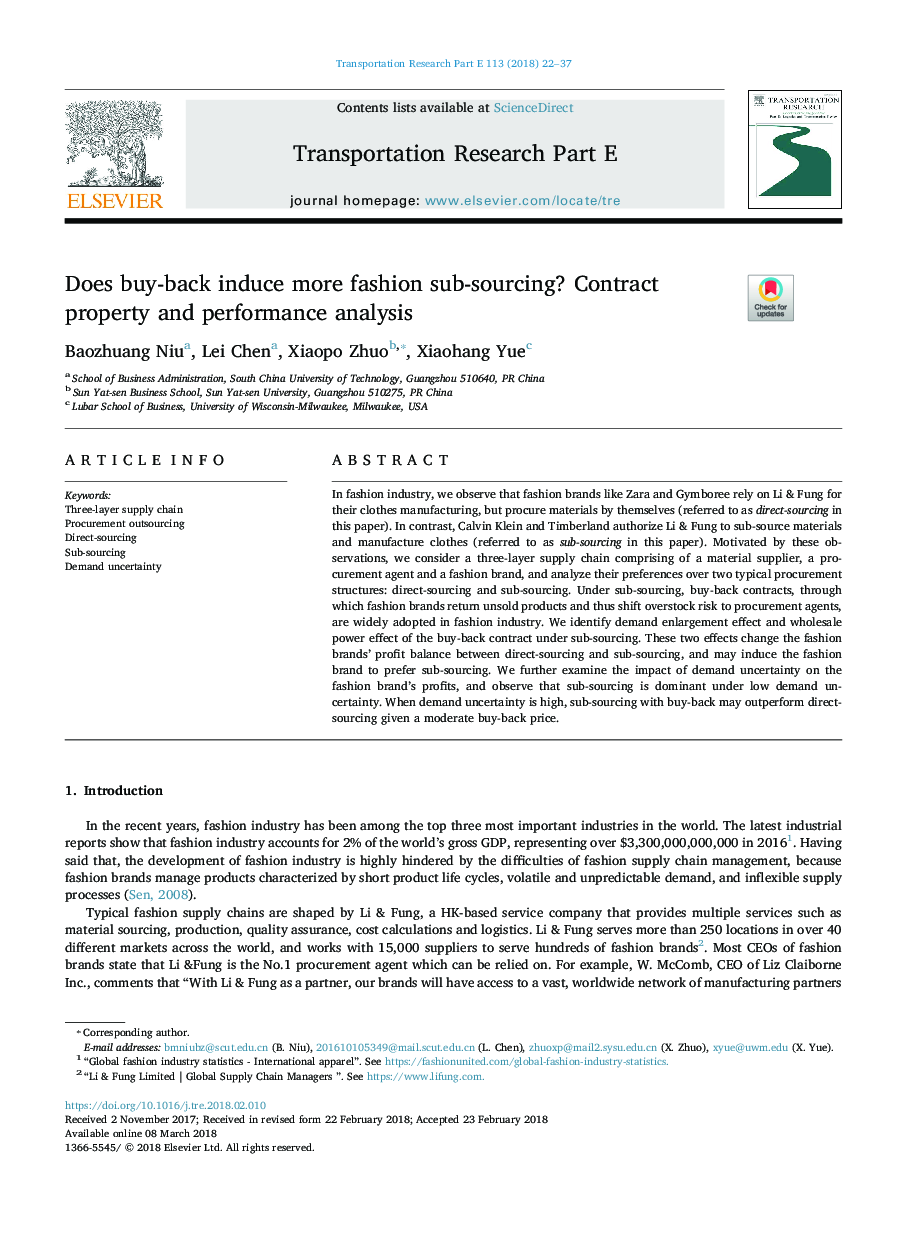| Article ID | Journal | Published Year | Pages | File Type |
|---|---|---|---|---|
| 7427728 | Transportation Research Part E: Logistics and Transportation Review | 2018 | 16 Pages |
Abstract
In fashion industry, we observe that fashion brands like Zara and Gymboree rely on Li & Fung for their clothes manufacturing, but procure materials by themselves (referred to as direct-sourcing in this paper). In contrast, Calvin Klein and Timberland authorize Li & Fung to sub-source materials and manufacture clothes (referred to as sub-sourcing in this paper). Motivated by these observations, we consider a three-layer supply chain comprising of a material supplier, a procurement agent and a fashion brand, and analyze their preferences over two typical procurement structures: direct-sourcing and sub-sourcing. Under sub-sourcing, buy-back contracts, through which fashion brands return unsold products and thus shift overstock risk to procurement agents, are widely adopted in fashion industry. We identify demand enlargement effect and wholesale power effect of the buy-back contract under sub-sourcing. These two effects change the fashion brands' profit balance between direct-sourcing and sub-sourcing, and may induce the fashion brand to prefer sub-sourcing. We further examine the impact of demand uncertainty on the fashion brand's profits, and observe that sub-sourcing is dominant under low demand uncertainty. When demand uncertainty is high, sub-sourcing with buy-back may outperform direct-sourcing given a moderate buy-back price.
Keywords
Related Topics
Social Sciences and Humanities
Business, Management and Accounting
Business and International Management
Authors
Baozhuang Niu, Lei Chen, Xiaopo Zhuo, Xiaohang Yue,
